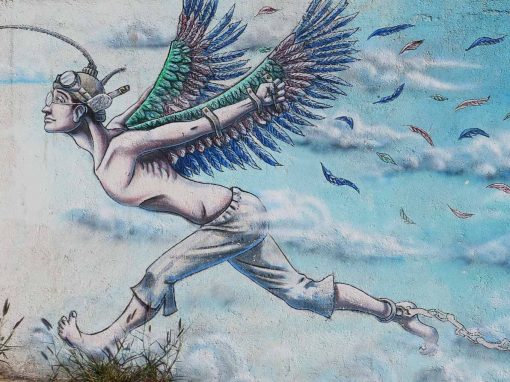Two days ago I’ve put out a preview to an unreleased long-form written piece. I’ve also promised I’ll release it here once the Medium publication I sent it to would publish it.
Please find it here:
And for the sake of keeping the content on my end as well, here’s the body of the post.
“I have this startup idea that will completely change the world!”
“My startup could change millions of lives! I just need to raise millions so that I can solve the “chicken-egg” problem of user acquisition really fast”
“I wish I knew how to solve the problem Uber had: not many drivers equals not many riders. And vice-versa. How did they go about it?!?”
Tell me if any of the above resemble something you ever said.
You are probably ambitious enough to want to change the world — and that’s a feat not many can be congratulated for.
You’ve got the will, for which I congratulate you. However, going straight for your world-changing idea might be the worst way to start.
Don’t listen to me though — go for it, fail enough times and come back here. Or let me just save you the time by showing you how it could play out in a better way.
How to go about changing the world through your startup’s product
The smart way to create a world-changing product is to start with a smaller section of it.
What do I mean by that? I’ll explain in a second, but first: does this apply to you?
If the big product seems even a tiny bit (at least in the deep ends of your brain) like it’s too big for you to go after, then you should do this.
And it doesn’t matter who you are — there are products that are too big even for the greatest founders. Even if you’re Elon Musk with + $165m in the bank in 2002, after selling PayPal, your visions might be higher than what any VC fund can bring you.
Yes, even with 9 digits in the bank, some ideas are too big to pursue directly. Especially if you’re talking about changing the car industry.
Elon Musk had resources when he took over Tesla. However, he didn’t have enough resources to go straight for the Model 3. And if you’re reading this story, chances are you know his main goal (or at least part of it): an affordable mass-market car that’s electric, green and very fuel-efficient.
But Elon’s in another industry. Let me explain the equivalent of what I said above applied to the tech industry.
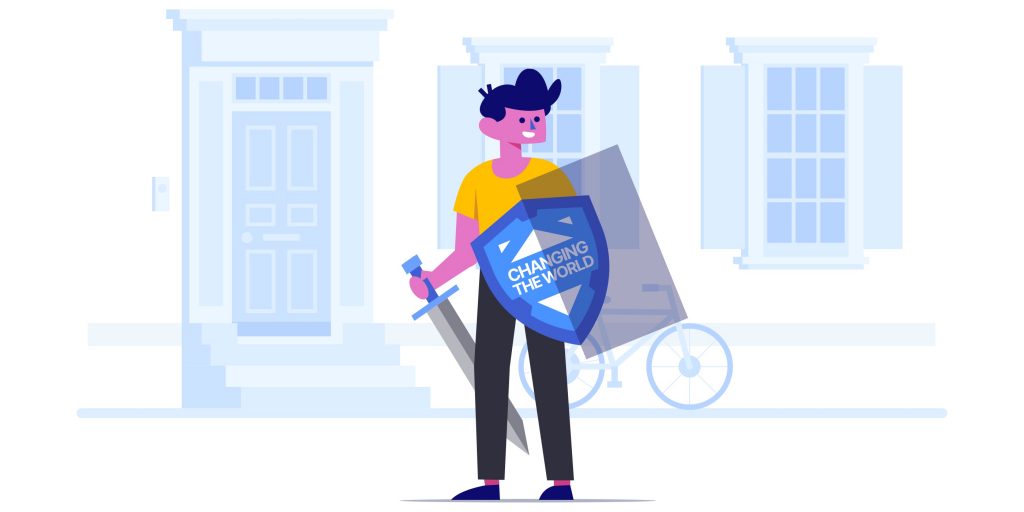
Let’s say you want to create Uber.
Play along with me, you’re in a pre-Uber world and you have the idea for it.
You want to connect drivers with riders. But maybe you’re not Travis Kalanick, who has previously sold a company for some 8 digits and has had some connections.
Maybe you can’t raise the amount of money he has raised which would have saved you time.
So what do you do? Much like every single ancestor of yours or mine, you adapt.
You adapt to becoming smarter and more efficient.
If you’ll ever succeed, we’ll say you adapted — otherwise, we will never hear about you. That’s beautiful since it plays out well in both cases.
Here’s one way to adapt:
One can create a “big-vision product” by starting to deal with a smaller subset/problem of this main product. Getting that “small area” solved will increase the chances of success for the bigger product.
Solving the “smaller problem” can even mean creating a separate product — one which will be later attached to the “big product”. We’ll call the smaller one a “funnel piece”.
That may sound confusing, therefore this is what it’d mean in the case of Uber. Instead of going straight for the gig economy app (which we know, courtesy of today’s world), you divide that huge dream into smaller pieces.
You need the drivers first. That’s a fact.
Otherwise, there would be no party going on. That’s the chicken-egg problem: no drivers, no riders — and vice versa. What do you do then?
You create something for the drivers. Remember, it can even be a separate product in itself. And because you need speed, you will respect the “Future of Freemium” ideology: as lightweight as possible, while making it as helpful as possible.
I don’t know a driver’s user profile that well for me to come with a brilliant idea. Driving is not my main thing, but I’ll play my hand at coming up with a “funnel piece” idea for Uber.
Usually, people create startup products around needs they have. Therefore, chances are you will know the people you’ll be serving better than I know how to serve “driving fanatics” (as this is what we’ll pick in this article’s role-play).
Therefore, in your case, you’ll come up with a better idea than mine below.
What can you do that will attract Uber drivers?
I’d want to aim at a power user type of person: someone who would definitely be into the idea of driving people around. Someone who would be a die-hard fan of my “Uber” concept.
My thinking is: if you love driving (even for long-distances), you’d love yourself a way to be paid for that.
Therefore, I’d need something that would filter for me the people who are into driving. A place where I gather all the driving fanatics.
And not only that, but I’d also love having to see the best amongst these people — to find out who are the best of the best. A hierarchy of drivers.
Here’s my idea of a funnel piece for Uber:
A community where driving fanatics write about their journeys:
- I’ve been on an adventure from point A to point B today
- It took me this long
- I went with my beloved partner
- We’ve visited these landmarks on our way
- We’ve stopped to eat at this nice place — by the way, they’re not very friendly to adventurers like us, but the food’s good!
- Accidentally, we’ve found this little town full of amazing locals
- This is a picture of myself and Joanne, the local baker who’s kind of a figure of the town. She’s been lovely and we just started talking randomly at the supermarket, as we stopped by to get some refreshments!
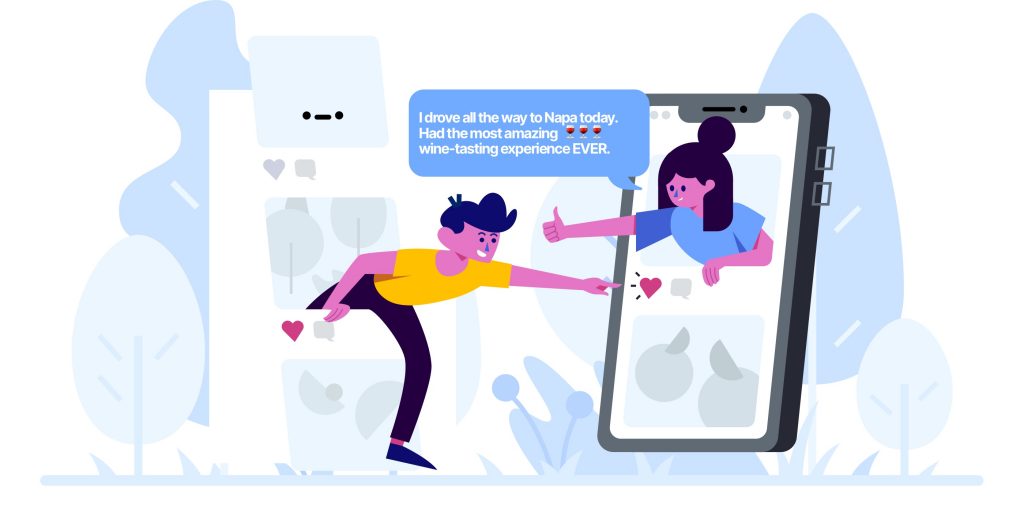
It’s some sort of a “Google Maps reviews” but for trips. Or you can think of it as a “trip journal” online community.
And since it’s a community, there are network effects in place: it gets better as more driving fanatics fill in the information.
Sure, there aren’t billions of driving fanatics — but I myself know people who simply love the adventure, the thrill and the randomness of going around in a car.
What’s the purpose of this? It’s simple: Those who are excited enough about sharing their trip adventures are likely to be excited about driving people around in their city. And to be paid for it, on top of that.
Remember, I need the power users of Uber (the driver’s side I mean, not the riders). Those who will have the courage, in the beginning, to try this new concept.
Forget what you know about Uber drivers today. In my scenario, I’m trying to take Uber off the ground, so I need power users.
You might be quick to dispel the way I’ve laid out over here since you know today’s landscape of Uber drivers — a very competitive marketplace. But in the beginning, Uber gave away very fat monetary bonuses for drivers, so as to lure them.
What I proposed is a separate product from Uber and we’ll soon see that there’s also another way to go about it.
Once you’ve got a serious amount of drivers benefitting from this “smaller product” (i.e. the community, in this case), then making Uber becomes much easier.
It’s harder to start Uber with 0 drivers than it is to start it with 500 drivers.
You can have those 500 people signed up if you’ve developed something for them in the first place.
Hold on— LinkedIn had this problem as well, didn’t they?
LinkedIn wanted to build a social platform for professionals. They would monetise it by making LI attractive to recruiters.
The problem? There would be no “party” going on for recruiters, unless there are a lot of people over there in the first place.
No value for recruiters meant no money for LinkedIn. And no money meant no way to keep the platform alive.
But if you remember, LinkedIn had a useful function before it became the social network that it is today: you were able to make your online CV/resume through it.
Instead of following the Europass CV/resume template every single time, adapting it for every application, downloading it as a PDF and attaching it through emails — now you’ve had a link.
Linkedin dot com slash “yourname”. That was it. A solution that got people onto a platform of professionals.
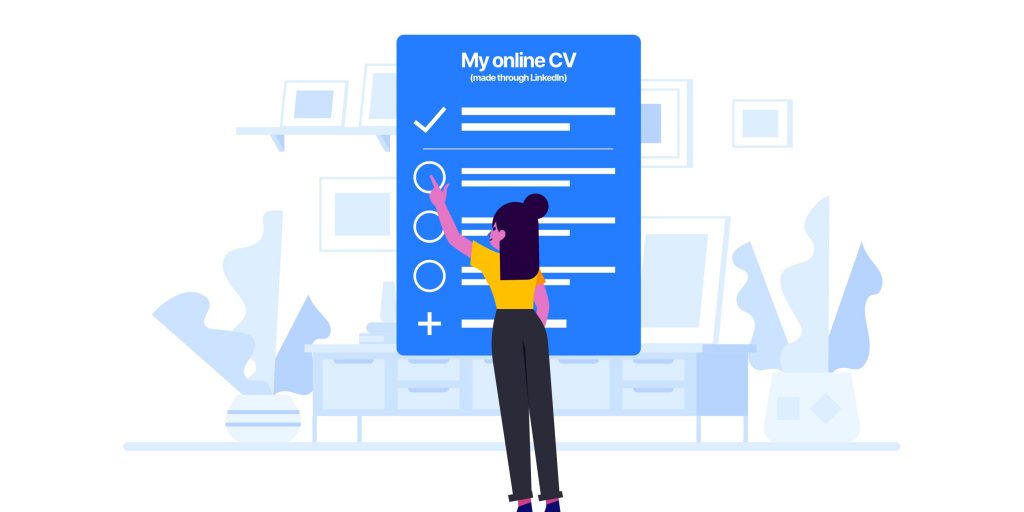
And, once again: for what kind of people was this product built? The answer: for those who would love the LinkedIn bold dream (i.e. the bigger vision product).
LinkedIn’s path towards a social platform didn’t mean a separate product, like what I described above with Uber.
LinkedIn’s “funnel piece” was a feature.
The transition is smoother if you manage to create a funnel piece as a feature but it all depends on what kind of value and incentives you want to give out to people, so as to get the party going on.
So Daniel, what was the Tesla mention all about?
For Tesla, the “funnel piece” that enabled their long-term dream meant a separate product: a very expensive, low-production-levels car in the first place. Actually, let me allow Elon to put it into words.
Elon Musk laid it all out in his Master Plan:
“The strategy of Tesla is to enter at the high end of the market, where customers are prepared to pay a premium, and then drive down market as fast as possible to higher unit volume and lower prices with each successive model.”
– Elon Musk, 2006
And then in his Master Plan part 2, he writes:
“The first master plan that I wrote 10 years ago is now in the final stages of completion. It wasn’t all that complicated and basically consisted of:
1. Create a low volume car, which would necessarily be expensive
2. Use that money to develop a medium volume car at a lower price
3. Use that money to create an affordable, high volume car”
– Elon Musk, 2016
As you can see, it played out well (at least so far). His funnel piece was the Tesla Roadster — that’s point 1, the low volume car which was expensive.
Then the Model S and Model X were the medium-volume cars which are cheaper than the Roadster — but still expensive.
Only the money from the S and X allowed Tesla to create the Model 3: the affordable and high-volume car.
Tesla didn’t go straight for “let’s make the affordable car right now — we just need to raise some dozens of billions”.
No, that was too much even for Elon, someone who has just sold a company for $1.5 billion.
LinkedIn didn’t go straight for “the social platform of professionals”. Or maybe they did, but they had to learn it the hard way that they need a “funnel piece” for their bigger plan.
What’s the conclusion for you, dear reader?
If you have a very ambitious plan — especially if you’ve got the chicken-egg problem — you need to break it down.
Break it down into a smaller piece, because a good comparison is that you’re planning to throw a party. This applies even more if you want to connect two types of people: the way LinkedIn and Uber wanted to connect.
No one wants to go to a party which hasn’t yet started.
In other words, no one wants an Uber where there are only 3 drivers — you wouldn’t open the app in the first place.
No one wants to go on LinkedIn to recruit people if there are only 10 signed-up people.
But maybe, just maybe, there’s a smarter way to make a product that connects people.
Maybe the way to start a party is by luring one side of the participants in the first place.
Doing something only for this one side. And doing it very well.
And once the tipping point has been reached (i.e. enough professionals are on LinkedIn), call your friends from the other audience and invite them over.
“Hey recruiters, we’ve got a ton of professionals in the house tonight. Wanna join?”
How does that sound in comparison to:
“Listen, listen, I know it sounds crazy, but we’re going to reinvent the way people are hired. We’re going to have people sharing with our company their sensitive and private info. Then we’ll put it out all out there so that everyone can see. And in a few months, you will be able to recruit people this way. Sounds cool, huh?”
…
…
…
You judge for yourself which one sounds better.
Making a funnel piece in my Uber-imaginary-case means luring together drivers.
With time, 5,000 car fanatics are on your “funnel product”. And when you want to launch Uber, you’ve got a direct way of communicating to a veryvery targeted list of people who are highly likely to become Uber drivers.
10% convert (at worst) and buy into your dream of “Make money with your car in your spare time”.
And the party is going on already, with 500 drivers there. The riders? They’ll join, because the music is already loud enough to attract them.
Plus, it’s a leaner approach. Your assumptions about the “funnel product” may not be right. In turn, you’ll test and reiterate with less time+money+effort invested.
Last but not least, when the big announcement of the bigger-vision product is coming, you already have a relationship with all these people you’ve helped.
Was this community the most intelligent idea? Far from it — I don’t know the audience so a true driving fan can come up with a better idea and, more importantly, execution.
But even when it’s not a great product and you’ve only gathered people through non-scalable way and donkey work — it might still be helpful and can get you off the ground, if you haven’t got investment money.
You’ve offered these people something — so they will want to return the favour. Thus they’ll lean in and listen very closely to your “plan of reinventing the future of the driving”, when the time comes.
And if you’ve got investment money? You should still do both of them in parallel.
I’m doing this
I’ve created an app that went from 0 to 200k users in its first year by accident. In essence, it’s a Wikipedia of authentications: you learn how to tell between fake and authentic sneakers/clothes.
It’s all free and it’s proven itself to be very helpful for those who are on the brink of exasperation, fearing that they got scammed with replicas.
My plan for the “bigger product” is not anywhere close to existing. And I plan on keeping it that way for the time being — we’ve got so much more to do on the funnel piece.
Why? It’s easier to start a product with 500K existing users as of now (or hopefully with 5M existing users in the following years) than it is to start it from 0.
This app is not the only thing I’ve put out as a consequence of this belief. We’ve made a library of the exact pitch decks companies like Uber, Airbnb, WeWork etc. used to raise money. Plus, in some cases, how they looked like in the early days.
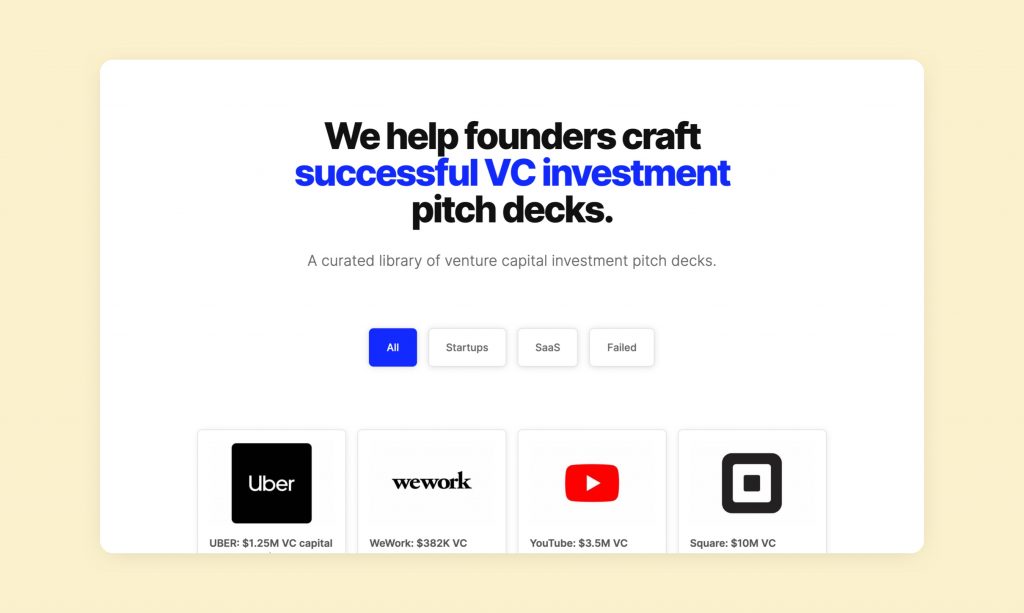
Why create that? It’s simple: I love interacting with startup founders — and I want to do more of that. People usually reach out to ask for advice, sometimes about how to raise money.
I didn’t know how to advise them on that — I never raised money. But I knew I could build this for them.
I’m writing this as it’s the underlying thought in multiple business endeavours I’m running. If they will turn out fine, I can point out to this article and say “Here it is, I’ve laid it all out before it happened, so maybe it’s working.”
Until then, I believe the ideas here still make sense by themselves. If you agree, I hope you will join me in becoming the early adopters of this vision of the future, where companies are creating cash-burning products which justify their costs of operation because of the amount of high-quality attention their main activity gets.
If it doesn’t play out well, as I said above, you won’t hear about this.
There’s another business endeavour I’m looking at, but I can’t disclose much besides one word: influence. If it gets to see the light of the world in a successful manner, it was noted here. Otherwise, too bad, we’ll try something else.
The bottom line
Sure, you can go for your grand plan.
But remember: it’s easier to get a party going on once people are already in the house.
Get one side of the party in the house, one way or another — and then start the party. This way, your grand-vision startup product’s chances are increased tremendously.
And who knows, maybe your venture capital pitch deck has higher chances when you’ve got “100k users and a grand plan” rather than just “a grand plan” by itself.
Maybe people are more incentivised to throw millions at you ?
About Ch Daniel
I’ve updated this signature in July 2020, so older mentions of the signature might not make sense.
I currently don’t write on this blog anymore. I wrote daily for 9 months on this very blog, but now I’m focused on building the CH Group.
If you want to follow my newer articles, check out the CH Group’s blog.
See everything I do here: Chdaniel.com




